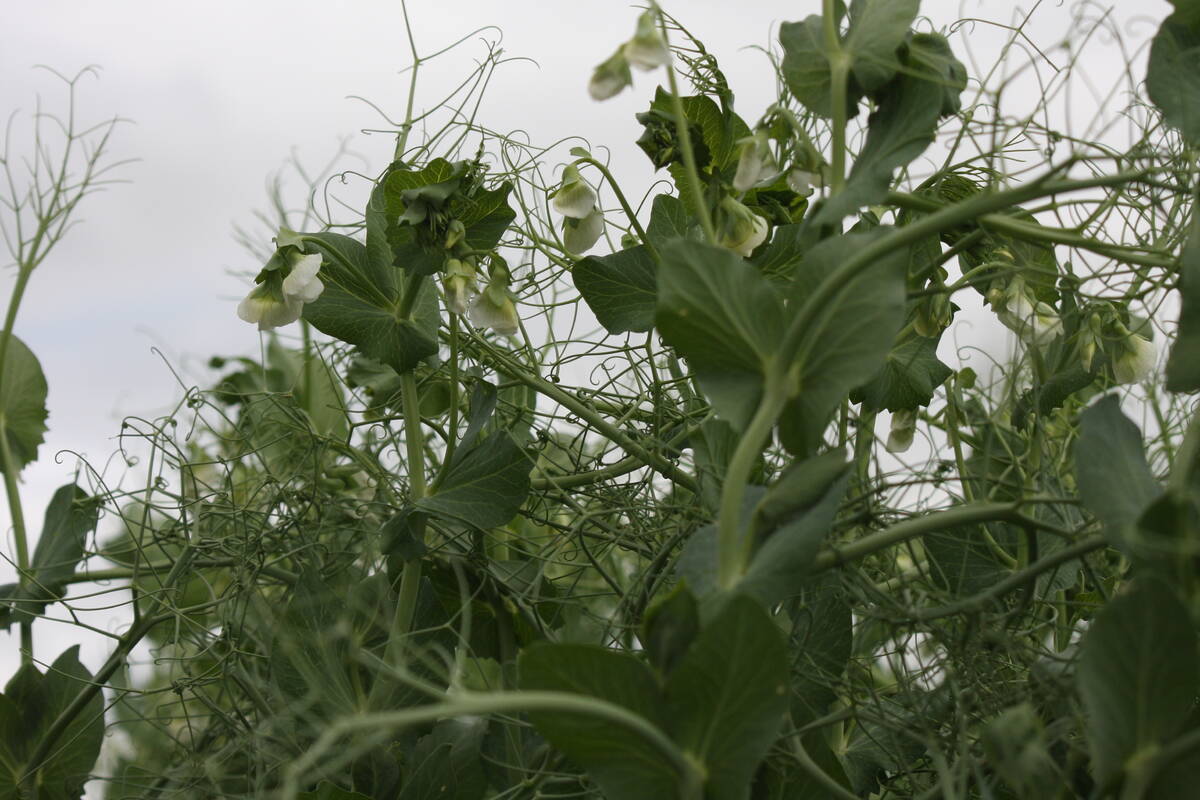So what do you do with three million tonnes of canola?
That’s the situation facing the canola industry, which expects Canada will have three million tonnes of stocks at the end of this crop year.
Crushers have an easy and happy answer to the question: crush it, sell the oil and make money.
But for farmers it isn’t such an easy situation. Prices have sagged and stagnated since harvest time, and most of the hope for rallies over the winter has evaporated.
For players of the Canola Commodity Challenge, the situation isn’t as severe, because the 1,000 tonnes in that game exists only on paper and doesn’t have to pay for an overdue input bill or hockey equipment for the kids.
Read Also

High pea yields shock farmers
There is going to be a massive pea carryout at the end of this crop year.
But it’s meant tough choices for farmer-players, and for civilians like me trying their hand at the educational marketing simulation sponsored by the Manitoba and Saskatchewan canola growers associations, The Western Producer, Cargill and CFCW radio.
The game opened with prices well below what most farmers and analysts considered reasonable, so many players held back from marketing their fictional crop. Harvest prices were generally thought to be seasonal lows that would clear some time in the early winter.
Then, as the huge size of the 2005 prairie canola crop became obvious, prices fell and profitable options became fewer. What were thought to be harvest lows may have been market highs.
The few players who sold their entire crop on the opening days of the challenge have so far fared best.
Those who have included the challenge’s PaceSetter marketing option, which regularly markets canola at whatever the standing market price is, managed to capture those unlikely fall highs, but only for some of their crop. And as the months of low prices wore on, their average selling prices using that mechanism fell.
There have been a few minor rallies over the winter, offering brief opportunities to get back to the lofty heights of $250 per tonne, but there has been no sustained rising market to sell into.
The challenge wraps up in April, so the last hope for those lingering with unpriced crop is a spring rally.
What’s the outlook for that? Worse than ever, analysts say.
“If anything, the market may need to discourage acres,” said Ken Ball of Union Securities.
But if for some reason a canola rally is sparked by something like a sudden unforeseen decrease in U.S. soy area, Ball said, it could be fed more fuel if crushers decide to pile on, completing their 2005-06 needs on the thinking that it is better to pay a little more now than risk even higher prices. Errol Anderson of Pro Market Communications said that was unlikely, adding prices might slip further in the next couple of months.
“I think we could see the lows of the canola market in April,” said Anderson.
“This crop year’s history. We’re finished.”
Anderson suggests getting rid of all remaining unpriced crop and if a farmer wants to play for an upside, buy into November canola futures and options, which have at least some positive outlook.
If true the only options remaining are to pick away at basis deals and attempt to exploit micro-rallies.
The Canola Council of Canada’s annual convention is in New York City this week. The focus is on boosting canola oil demand by increasing U.S. consumers’ appreciation of the healthy product’s benefits.
That could help stimulate future demand, but for now, farmers and Commodity Challenge players are likely to be living in next year country, a prairie tradition.
The Commodity Challenge is on the web at www.canadachallenge.ca.















